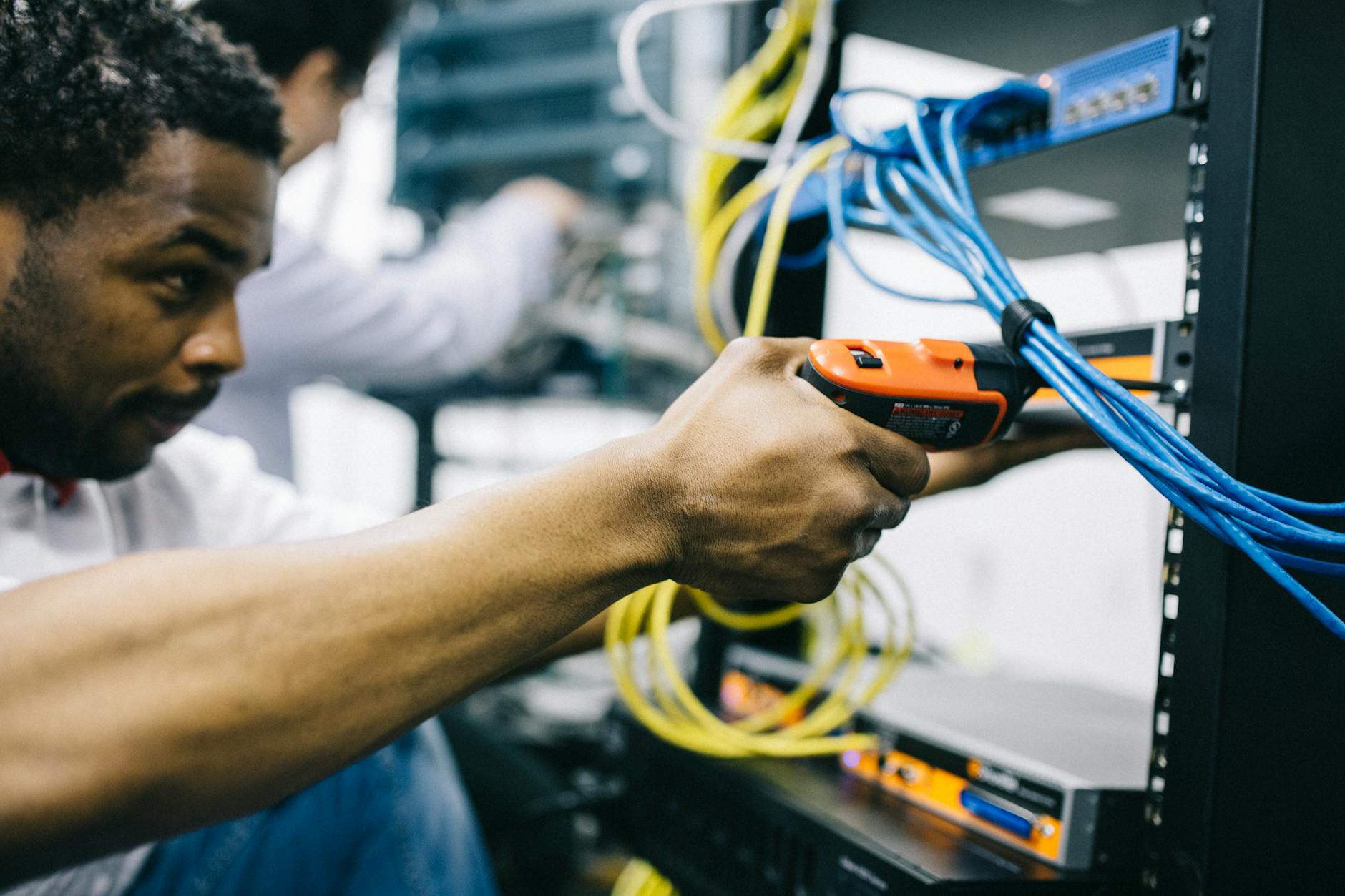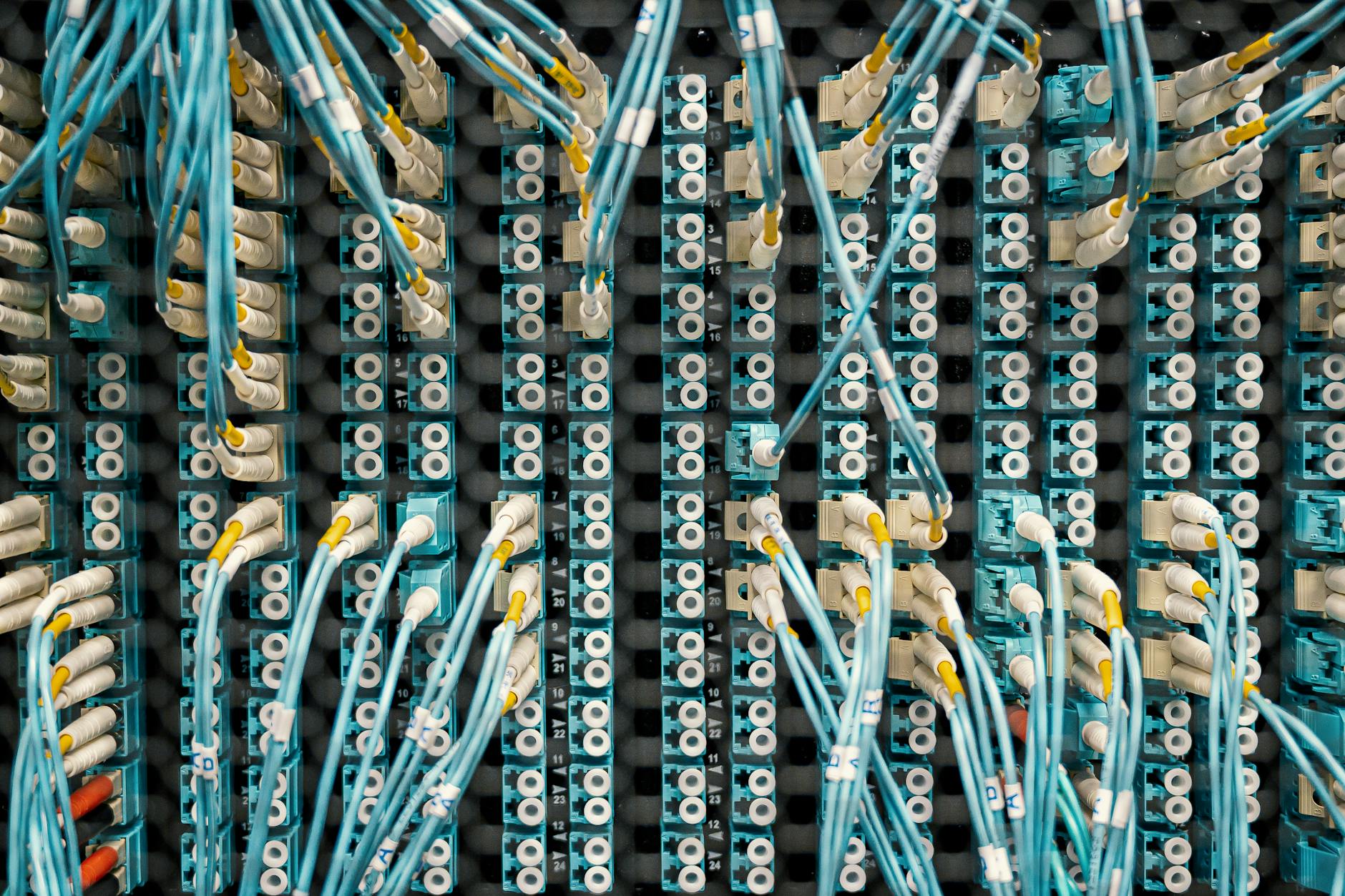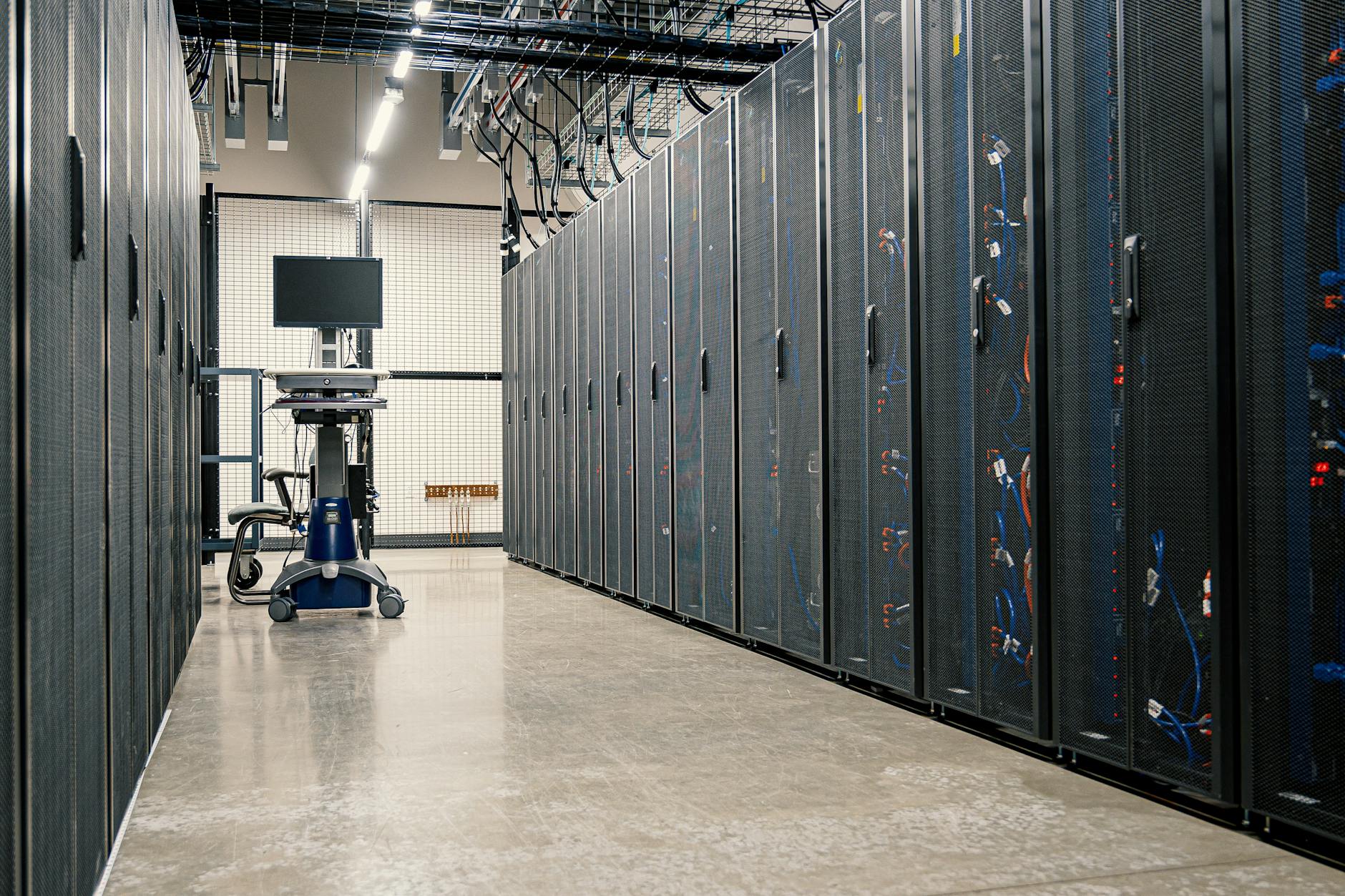Strengthening Internet Infrastructure in Africa
Internet Infrastructure in Africa
Growth of Internet Usage
Over the past decade, Africa’s relationship with the internet has blossomed. More folks are plugging in, thanks to better access driven by broadband projects. Young Africans are especially savoring the benefits for learning and job hunting.
Check out these game-changing stats:
| Year | Internet Penetration (%) |
|---|---|
| 2015 | 28 |
| 2020 | 43 |
| 2025 (Proj.) | 55 |
This boom in internet use isn’t just about hitting the ‘like’ button more often. It’s lighting up economies and creating new opportunities across the map. In places like Nigeria and Tanzania, poverty levels dropped by a cool 7% after folks got online. That’s major!
If you’re keen to see how digital tools are shaking things up, check out our piece on digital transformation in Africa.
Expansion of Mobile Broadband
Mobile broadband is like the lifeline of Africa’s big digital leap. The telecom game is wide open, with fresh cash flowing into network upgrades and fiber optic cables crisscrossing the continent. This is a big win for countries like South Africa, who’re now topping charts with lightning-fast mobile internet (Business Insider Africa).
Here’s a quick peek at some cool mobile speed rankings:
| Country | Global Rank (Mobile Speed) | Average Speed (Mbps) |
|---|---|---|
| South Africa | 52 | 30.21 |
| Kenya | 68 | 20.96 |
| Nigeria | 77 | 18.00 |
Mobile broadband is more than just a tech buzzword. It’s making the internet way more affordable. From 2019 to 2021, the connection price in sub-Saharan Africa nosedived from 11.5% to 5.7% of monthly income. That’s big news for folks in countries like Benin and Somalia, where internet charges have seriously dropped.
Want to dive deeper into mobile tech’s impact? Check out our article on mobile technology in Africa.
With all these enhancements, Africa’s young talent is set to rock the start-up scene. Better internet fuels creativity and entrepreneurship, pushing economic growth and tech progress within the African start-up ecosystem.
Investment in Network Infrastructure
We’re really pushing the envelope in Africa’s internet scene, sinking some serious cash into boosting network reach and tossing fiber optics into the mix. These moves are game-changers, creating fresh job and business opportunities for young Africans itching to dive into online work.
MTN’s Network Expansion
MTN’s throwing down over a billion bucks to broaden its network. They’ve snagged 4G and 5G spectrum licenses in all the hot spots. This has chopped data prices by about 22.5% on average, proving that investing in network gear isn’t just fancy talk; it’s seriously upping internet speeds across Africa (Business Insider Africa).
| What They Did | What’s Happening |
|---|---|
| Total Spend | $1 billion |
| Price Cut on Data | 22.5% drop on average |
| Spectrum Action | 4G and 5G in main markets |
| Impact on Browsing | Better speeds and lower bills |
MTN’s on a mission, proving that plowing money into speedy mobile and broadband networks is fueling Africa’s digital change-up and firing up economic engines.
Deployment of Fiber Optic Networks
Fiber optics are the secret sauce, taking internet connections to warp speed for homes and businesses. As these networks spread out, the internet’s getting a major boost in many African nations (Business Insider Africa).
By 2021, nearly half the folks in Sub-Saharan Africa could tap into these lightning-fast networks, showing just how quick this tech is catching on.
| Region | Fiber Network Coverage |
|---|---|
| Sub-Saharan Africa (2021) | Nearly 50% |
This fiber bonanza is stirring things up, speeding up connections and juicing Africa’s economic motors. By getting homes and workplaces hooked up, it also sets the stage for digital strides down the line.
For young folks in Africa, knowing the lay of this digital land is essential for tapping into the booming online economy. Moves like MTN’s network rollout and fiber optic spread are reshaping Africa’s tech story and giving a boost to the start-up scene. Bridging the digital gap is key to making sure everyone can hitch a ride on the connectivity express.
Want to know more about tech shaping Africa’s tomorrow? Check out our pieces on mobile tech in Africa and hacks for straightening curly hair.
Fiber Optic Networks in Africa
Household and Business Connectivity
Fiber optic networks are shaking up the internet game in Africa, unleashing super fast connections right to people’s doorsteps and businesses. It’s like putting a rocket booster on a bicycle, suddenly making everyday online activities more doable and jobs involving the internet more within reach. Once a pipe dream for many in the region, nearly half of Sub-Saharan Africa got a taste of this high-speed luxury by 2021. Imagine going from dial-up to fiber faster than you can say “buffering”.
Take a look at the West Africa Regional Communications Infrastructure Program (WARCIP) in Mauritania. This project really brought home just how much of a game-changer fiber optics can be. Local places got hooked up to broadband like never before, showing off a 53% boost in connectivity. They also slashed wholesale broadband prices dramatically—from an eye-watering $7,000/month to a wallet-friendly $55/month. Thanks to them, even those far-off areas got pulled out from the dark ages with an impressive 1,700 km of new fiber optic cable laid down.
| Metric | Before WARCIP | After WARCIP |
|---|---|---|
| Connected Localities | Shot up by 53% | – |
| Wholesale Broadband Price | $7,000/month | $55/month |
| Fiber Optic Advent | – | 1,700 km |
Why It Matters for Internet Speeds
With fiber optic networks, the internet is firing on all cylinders, offering blistering speeds that young folks can tap into for online gigs, classes, or their latest Netflix binge. Countries across Africa are riding this wave, with noticeable boosts in download goodness. It’s fiber optic performance putting pedal to the metal on the digital highway.
Sub-Saharan and North Africa’s usual high-flyers are clocking in real numbers when it comes to download speeds. These stats are vital, not just for bragging rights but for real-world implications like distant learning and remote work possibilities.
| Area | Country | Download Speed (Mbps) |
|---|---|---|
| Sub-Saharan | South Africa | 44.59 |
| North Africa | Egypt | 34.53 |
| Sub-Saharan | Nigeria | 16.21 |
| North Africa | Morocco | 12.98 |
The magic of fiber optics is weaving a network strong enough to boost productivity, open doors for businesses and startups, and ultimately fuel the continent’s digital engine. It’s these networks that are playing a big part in Africa’s race towards being more connected and digitally on the ball.
For more deep dives into how revamped internet is kicking the economy into gear and putting African tech on the map, check out our takes on economic growth and the bold role of mobile technology in the area.
Challenges in Internet Infrastructure
You’d think with all the strides we’ve made, everyone would be tweeting, streaming, and connecting faster than the speed of light—but that’s not quite the story in Africa. There’s a maze of issues still tangled up in getting solid internet there. If you’re a young African trying to make your mark in the online world, understanding these hurdles is like having a cheat sheet for what’s to come.
Scarce Internet Infrastructure
Imagine trying to fish in a pond with hardly any water—that’s how it feels trying to connect in parts of Africa. Many countries face a serious lack of internet magic. Without the right tech in place, folks can’t hop online easily or cheaply. According to Statista, pumping more funds and resources into internet build-out is like handing out life jackets on a sinking ship.
The figures are quite stark. Over 60% of Africans are still offline, and for those who do manage to plug in, they grapple with steep prices and spotty service. What makes it worse? The expense of laying down those essential fiber-optic lines—costing anywhere from $15,000 to $30,000 per kilometer.
Addressing Connectivity Disparities
Building bridges to better connectivity takes a mountain of cash and grit. The World Bank figures that linking 1.1 million Africans to speedy broadband needs around $100 million, plus heaps of tech wizardry—like putting up 250,000 spanking new 4G base stations and rolling out about 250,000 kilometers of fiber-optic cable.
There’s some good news: steps have been taken to bring down internet costs. For instance, the cost of hooking up in Sub-Saharan Africa dropped from 11.5% of an average person’s monthly income in 2019 to 5.7% in 2021 (The World Bank). But it’s clear that this isn’t a sprint; it’s a marathon to make internet access a universal gig.
| Connectivity Metric | 2019 | 2021 |
|---|---|---|
| Cost of Internet as % of Monthly GNI Per Capita | 11.5% | 5.7% |
| Number of People Unconnected (Millions) | 800 | 700 |
For more on how Africa is striding into the digital age and raking in investments, check out our pieces on digital transformation in Africa and mobile technology in Africa.
Tackling these connectivity kinks and throwing cash into internet infrastructure won’t just let us send more emojis. It’ll open doors to economic bubbles waiting to burst and set the stage for new players to join in the hustle, like boosting economic growth in African countries and fueling a buzzing African start-up ecosystem.
Regional Internet Penetration
Sub-Saharan and North Africa
Boy, have we seen a tech boom in Africa! The internet wheels are turning fast, especially when you peek into how things have shaped up between Sub-Saharan and North Africa. Fiber optic networks have just about reached half the folks in Sub-Saharan Africa by 2021. This wasn’t the case a few years back, but now, it’s a connectivity whirlwind, according to Statista. Meanwhile, North Africa’s catching up too, making waves in the economic and business spaces in these areas.
A key thing to check is the average download speed, which shows differences between the two regions. A quicker pace means better internet, a great win for businesses and jobs online.
| Region | Mean Download Speed (Mbps) |
|---|---|
| Sub-Saharan Africa | 7.5 |
| North Africa | 10.2 |
These numbers tell us about where each area stands tech-wise, affecting how many internet jobs pop up.
Insights by Country
The internet in Africa? It’s a mixed bag, depending on where you look. By the end of 2019, 37 African countries got a boost with at least one submarine cable making landfall, pushing up their connectivity game. That’s a big step up from 2008, when only 16 countries were plugged in.
Internet bills are falling hard too. In Benin and Somalia, the cost plummeted from 20 to just 3 percent and from 18 to 2 percent, between 2019 and 2021. Pushing for more competition and better telecom handling in places like Angola, Ethiopia, and Senegal has made the web cheaper and easier to get (The World Bank).
| Country | Submarine Cables (2019) | Submarine Cables (2022) | Internet Cost Reduction (%) |
|---|---|---|---|
| Benin | 1 | 3 | 20 to 3 |
| Somalia | 1 | 3 | 18 to 2 |
| Angola | 2 | 4 | Significant |
| Ethiopia | 1 | 3 | Significant |
| Senegal | 2 | 3 | Significant |
Companies like MTN are putting cash where their cables are, widening network reach and laying down fiber optics like no one’s business. This isn’t just changing the tech scene, but also firing up growth and opening doors for new money-making ideas across Africa (economic growth in African countries).
Want to know more about mobile networks and their power in Africa? Check out our post on mobile technology in Africa.
Getting the scoop on these differences and how each country fits into the internet world helps us see how internet infrastructure changes things up in Africa. This info is golden for young Africans looking to dive into online work and be a part of the buzzing African startup ecosystem.
Internet Infrastructure Development
Importance of Data Centers
Data centers are the unsung heroes of Africa’s digital economy. They’re where all the behind-the-scenes magic happens for storing, processing, and dishing out data. With digital activities shooting through the roof, we gotta have top-notch data centers to keep things running smoothly. Nobody likes buffering, right? Picture these centers like massive data reserves fueling all sorts of internet services, including cloud stuff that’s a game-changer for businesses wanting to go big. Better data centers mean more room for creative ideas and pushing the digital shift in Africa.
Check this out:
| Metric | Value |
|---|---|
| Number of Data Centers (2021) | ~50 |
| Projected Growth (2025) | Double |
| Investment in Data Centers (2025) | $1 billion |
Planting data centers all over the place tackles the data sovereignty snag – real important for keeping African data on home turf. Local centers mean faster internet and more stdy connections, heating up the engines of economic progress in African countries.
Growth in Mobile Networks
Phones. They’re not just for chatting anymore. The boom in mobile networks is rewriting the rules, spreading internet access like wildfire across Africa. Come 2025, we’re eyeballing over 600 million phone hookups, with a whopping 65% being slick smartphones (White & Case). That’s like bridging the gap in a big way.
Here’s the lowdown:
| Metric | Value |
|---|---|
| Mobile Penetration Rate (2025) | 50% |
| Connections via Smartphones | 65% |
| Average Mobile Traffic per Subscriber (2025) | 7 GB/month |
Mobile’s the MVP when it comes to getting online in areas where wifi’s still a dream. As these networks stretch their muscles, more people get the golden ticket to join the digital scene. Think mobile banking, online shopping, and powering up the African start-up buzz.
And hey, internet costs aren’t burning holes in pockets anymore. Between 2019 and 2021, the price for connecting in sub-Saharan Africa took a nosedive, going from 11.5% of monthly income to 5.7%. This price drop opens the doors wider, inviting more folks to tap into digital services.
Wrapping it all up, a one-two punch of revamping data centers and mobile networks is key to stepping up Africa’s internet game. With smart investments and the right rules, we’re all set to roll towards a future where everyone’s plugged into the digital world.
The Digital Divide in Africa
Rural Connectivity Challenges
Africa is vast, and while cities have started to get decent internet, many rural areas are still struggling to catch up. As of 2022, fewer than a third of Africans can tap into broadband (White & Case). This gap widens the digital divide, limiting opportunities for people living in the sticks.
| Indicator | City Life | Country Life |
|---|---|---|
| Broadband Access (%) | 70 | 30 |
| Internet Penetration (%) | 65 | 35 |
| Average Internet Speed (Mbps) | 25 | 10 |
Getting remote areas connected isn’t a walk in the park. Cities can often upgrade what’s already there; villages might need entirely new setups. Submarine cables have improved things a bit, but those last few miles to homes in the countryside are still tricky.
Bridging the Gender Gap
When talking about internet access in Africa, we can’t ignore the difference between men and women. Women, especially in less urban areas, often don’t have the same online access as men. This restricts their access to information, tech skills, and job opportunities.
| Gender | City | Rural |
|---|---|---|
| Men (%) | 75 | 45 |
| Women (%) | 55 | 25 |
In places like Nigeria and Tanzania, getting more of the population online has cut poverty and boosted jobs, with an 8% rise in wage employment. Closing the gender gap online could bring big social and economic benefits.
Programs helping women get online are key. Governments and international groups are stepping up with initiatives to make tech accessible and cheap for everyone. This includes teaching digital skills and setting up policies so that economic growth in African countries doesn’t leave women behind.
Helping women and rural folks get connected isn’t just about closing the digital divide. It’s about driving Africa toward a future where everyone can benefit equally. Keep an eye on our work in bridging this gap and supporting the African start-up ecosystem.
Economic Impact of Improved Infrastructure
We’re paving new roads—figuratively and literally—as we beef up internet infrastructure across Africa. The perks of this digital upgrade are more than a few. With better connectivity comes a boost to economic health, creating jobs and pulling nations up by their digital bootstraps.
Contribution to GDP
Strong internet infrastructure isn’t just about faster memes; it fuels the GDP engine too. Africa’s cyberspace could add a whopping US$180 billion to the GDP pot by 2025, as shared by the IFC and Google (White & Case). This surge stems from zippier internet access, making it a breeze for businesses to wow their clients, spark fresh ideas, and lure investors from around the globe.
| Year | Possible GDP Boost (USD Billion) |
|---|---|
| 2020 | 115 |
| 2025 | 180 |
Potential Growth by 2025
The ripple effect of souped-up internet stretches far across Africa. By getting on board with digital transformation projects, like the World Bank’s Digital Economy for Africa (DE4A) initiative, we can digitally load every person, business, and government with a connection by 2030 (World Bank).
Projects are popping up to fuel competition and tidy up public telecom assets in places like Angola, Ethiopia, and Senegal. Internet costs in sub-Saharan Africa took a nosedive—from 11.5% of the monthly gross income (GNI) per person in 2019 down to 5.7% in 2021 (The World Bank).
| Country | Net Cost (% of Monthly GNI) 2019 | Net Cost (% of Monthly GNI) 2021 |
|---|---|---|
| Benin | 20 | 3 |
| Somalia | 18 | 2 |
Lower costs mean easier access and more room for economic hustle, all while closing the digital gap.
These infrastructure leaps are game-changers, especially where Wi-Fi was just a dream. Take Mauritania’s WARCIP project; it dialed up broadband reach by 53% and shaved broadband bills down by 99%, from $7,000 a month to $55. Dropping 1,700 km of shiny fiber optic cable massively expanded access for the folks who’ve been left hanging.
Closing the digital rift and stepping up internet infrastructure isn’t about shiny gadgets. It’s setting the stage for steady economic hikes and creating a ton of gigs for Africa’s young blood. Better connections lead to smarter education, inventive brains, and a big, happy digital family. Want more on this? Peek at our write-ups on digital transformation in Africa and economic growth in African countries.
World Bank Initiatives
DE4A Initiative
Let’s break it down: in 2019, the World Bank Group gave the thumbs up to the Digital Economy for Africa (DE4A) project. They’re on a mission to get everyone from every corner of Africa—be it folks, businesses, or governments—into the digital groove by 2030. This isn’t just about getting online; it’s paving the path toward a buzzing, secure, and welcoming digital space. Think of it as building roads, markets, platforms, and setting the rules, all while making sure nobody’s left out.
The DE4A project has been a game-changer for nations looking to up their digital ante, turning connectivity from a luxury to a norm. It’s sparked economic fireworks, inspired innovation, and created jobs. Talk about impact—70 digital projects are on the go, pulling in a whopping US$9 billion across 37 African countries (World Bank).
| Year | Number of Projects | Investment (US$ Billion) | Countries |
|---|---|---|---|
| 2019 – 2023 | 70 | 9 | 37 |
Projects for Digital Transformation
The World Bank isn’t stopping with DE4A. They’ve got their hands in several other pots, all about beefing up network infrastructure and tearing down the digital divide. Twenty-four projects are on the docket, bringing US$2.8 billion to 23 African nations (World Bank).
The big idea? Lowering internet bills, brewing some healthy competition, and cleaning up the rulebook. These efforts aim to get the region more digitally connected. Just look at the numbers—internet costs in sub-Saharan Africa took a nosedive, going from 11.5% to 5.7% of the monthly income per person between 2019 and 2021 (The World Bank).
| Country | Cost Reduction (%) | Project Focus |
|---|---|---|
| Benin | 20 to 3 | Boosting competition and public telecom tweaks |
| Somalia | 18 to 2 | Better regulations and broadband boost |
| Angola | – | More broadband for more people |
| Ethiopia | – | Tweaking public telecom management |
| Senegal | – | Pumping up competition |
Plus, the World Bank is all in on helping Africa build some mighty fine digital markets, which means smoother data flow between countries and turning data into value. Investments here cover widening broadband access in places that often get overlooked, beefing up competition, and organizing the rules to cut costs and boost connectivity (World Bank).
Want to dive deeper into what’s cooking? Check out our pieces on digital transformation in Africa and its ripple effects on economic growth in African countries.













